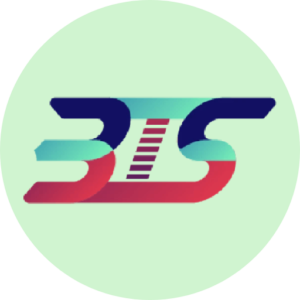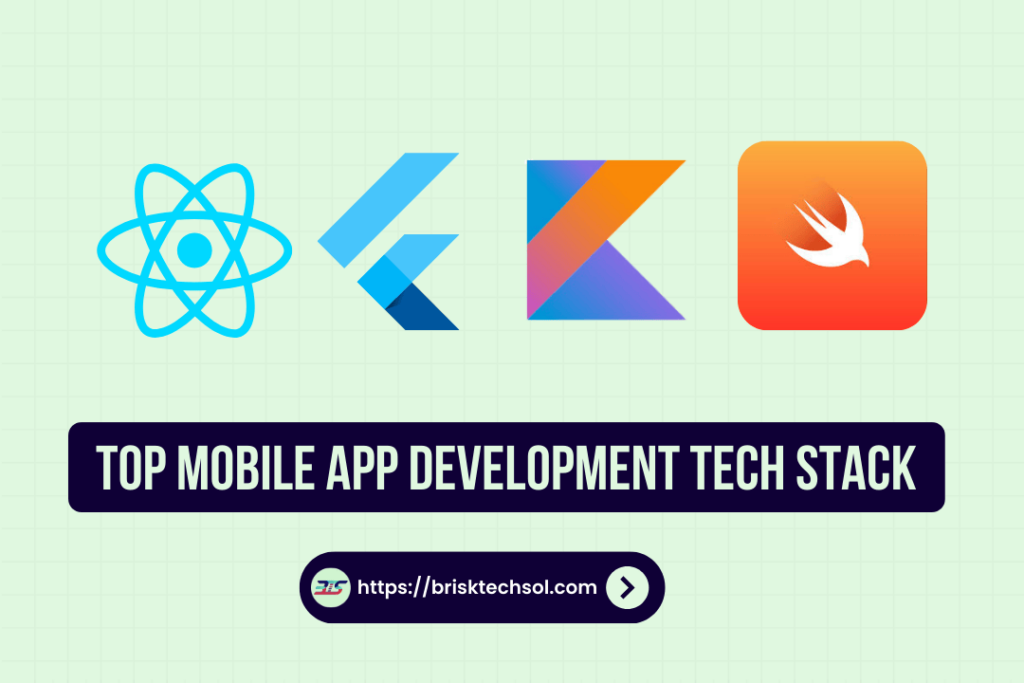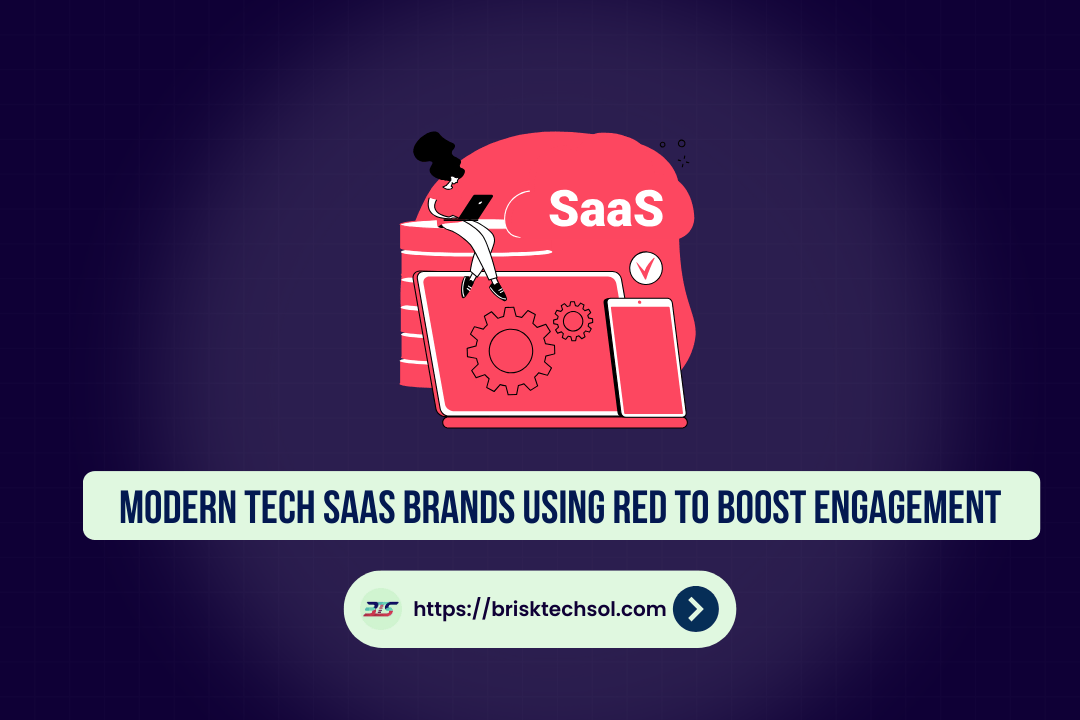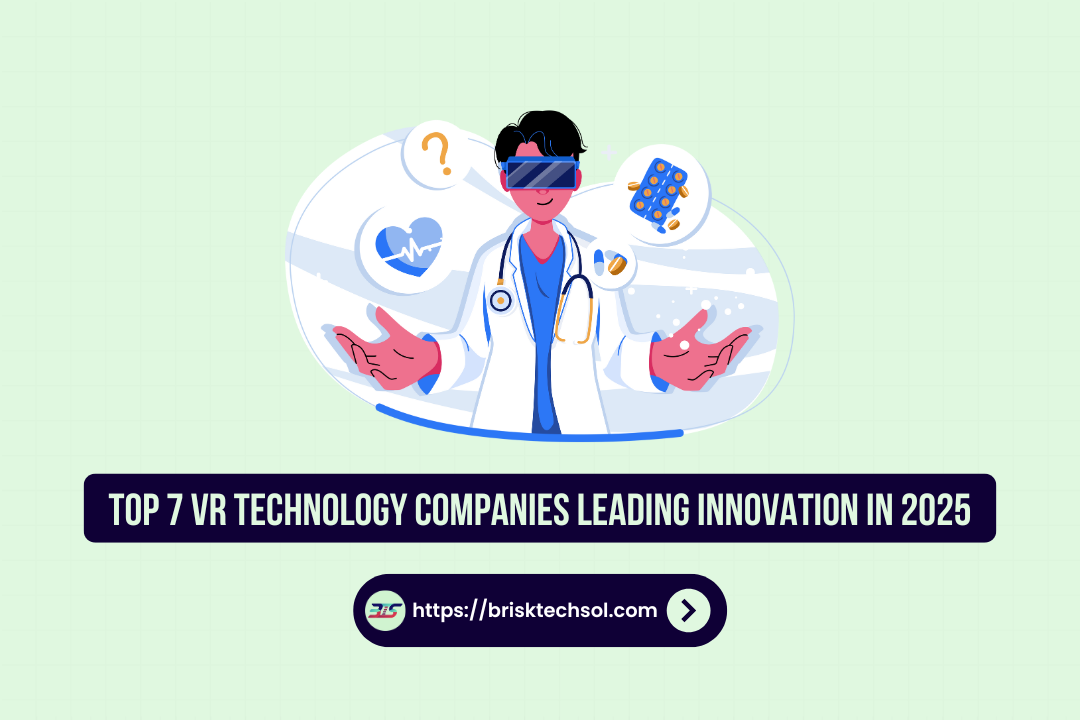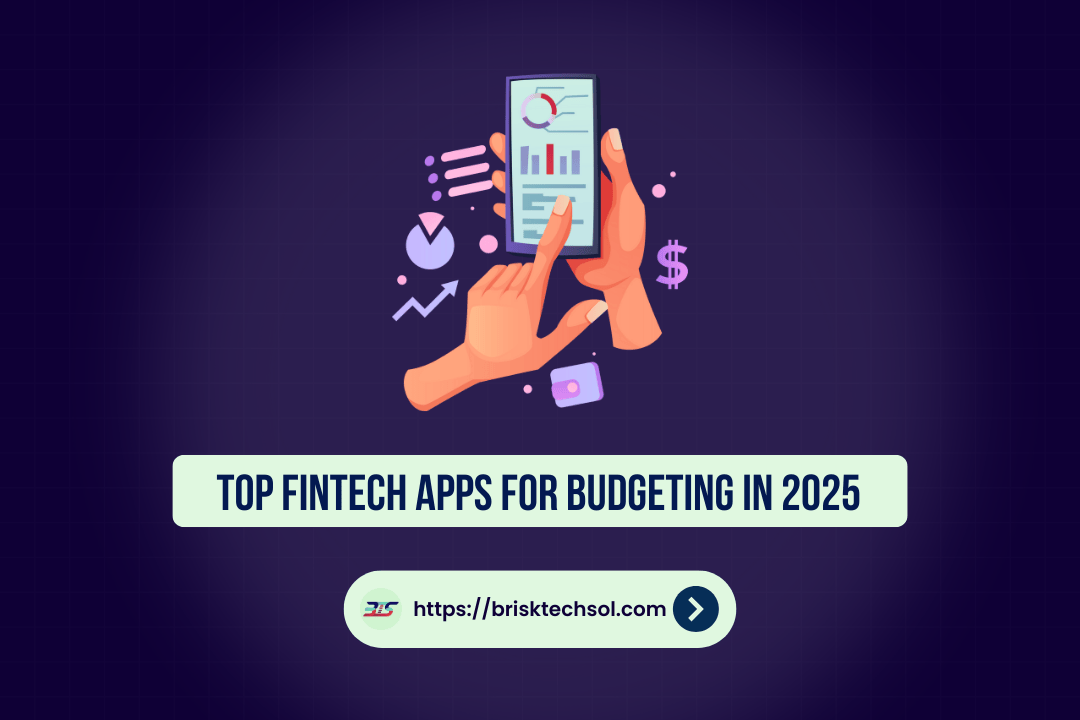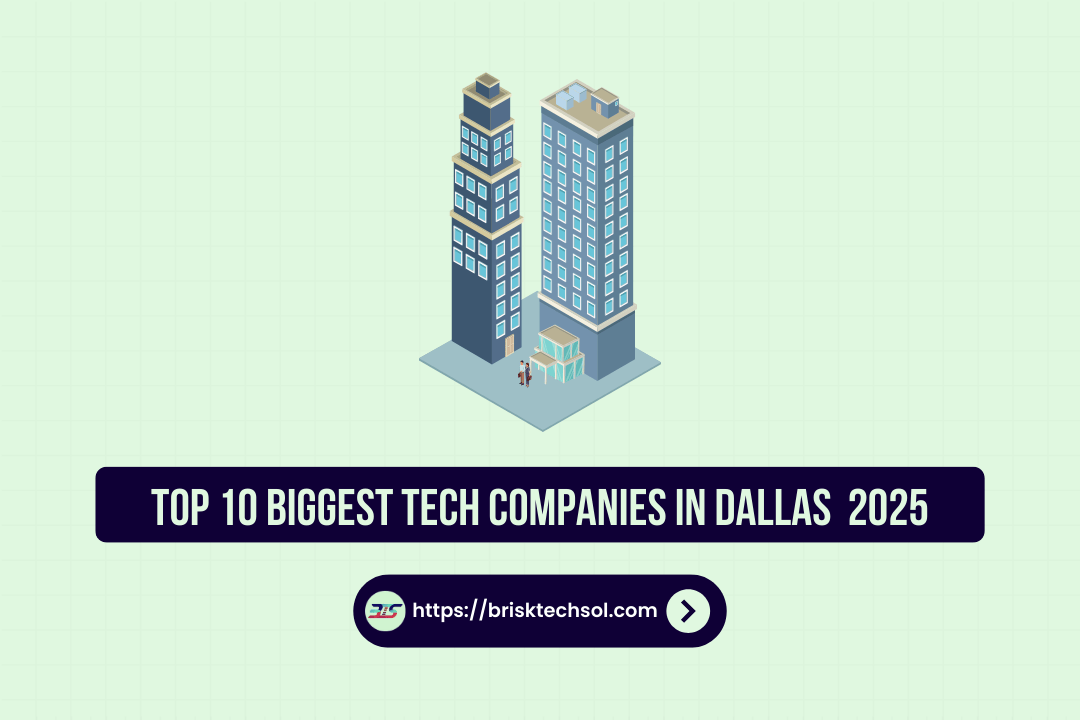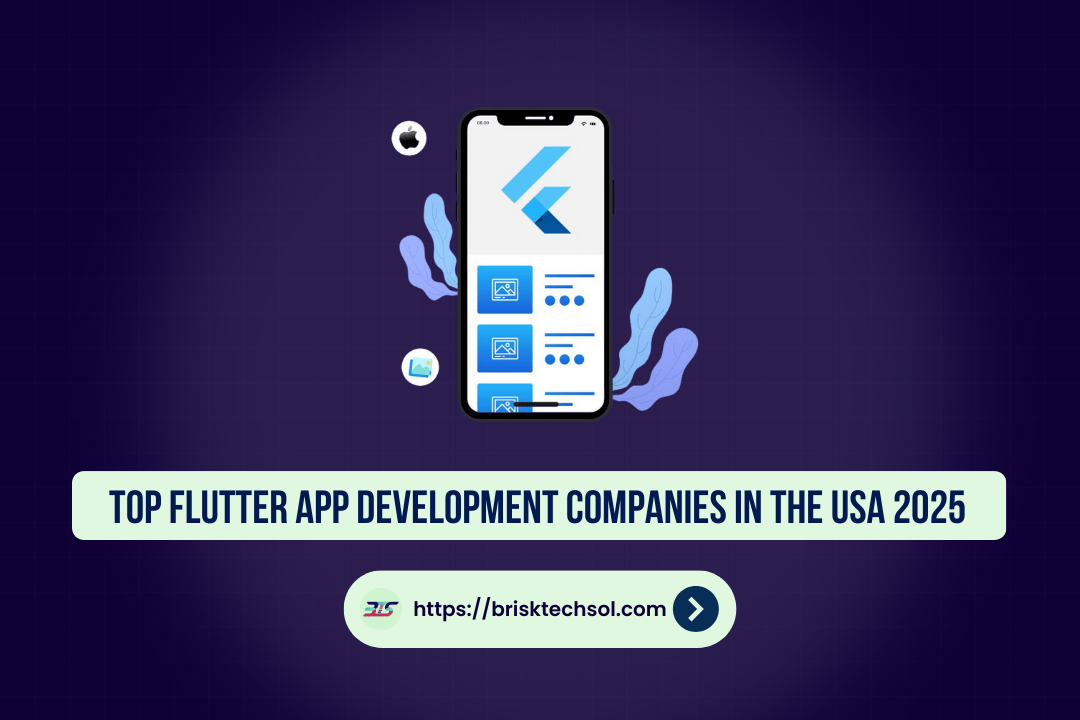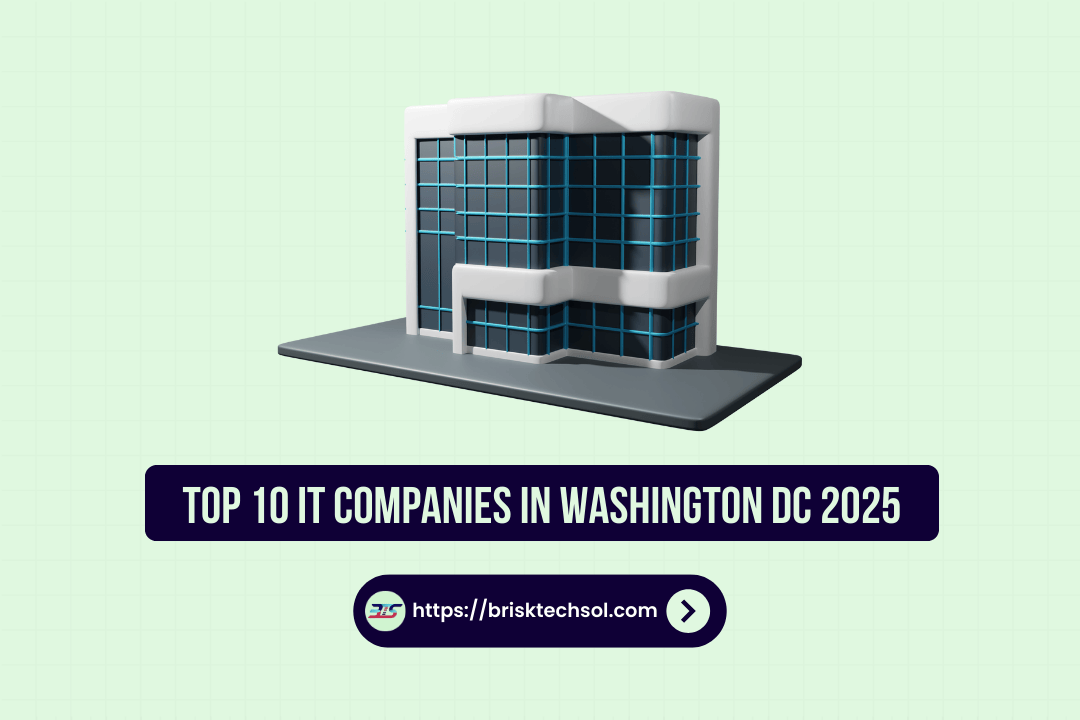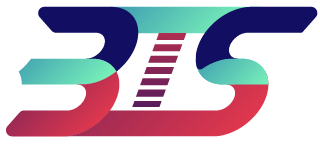This article explores the top mobile app development tech stacks for 2025, offering insights into the best frameworks, tools, and technologies for building efficient and scalable apps. It covers React Native, Flutter, Swift, Kotlin, and other popular stacks, helping developers choose the right tech stack based on app requirements, performance, and team expertise.
What is a Tech Stack?
A tech stack is a collection of technologies used in the development of an application. In mobile app development, the tech stack refers to the programming languages, frameworks, libraries, tools, and other technologies that are utilized to build, deploy, and maintain the application. It includes the front-end (client-side) and back-end (server-side) components, databases, and services.
The front-end development is responsible for how the app looks and interacts with users, while the back-end development handles data processing, user authentication, and business logic. The combination of these technologies forms the complete system that powers the mobile application.
Main Components of a Mobile App Tech Stack
- Front-End Development: This component is responsible for the user interface (UI) and user experience (UX). It involves designing the app’s layout, appearance, and interactive elements. Front-end development ensures the app is user-friendly and visually appealing.
- Back-End Development: The back-end involves the server-side logic, databases, and APIs that process data and provide functionality to the app. The back-end ensures that data is securely stored and accessed by the mobile app.
- Database Management: Mobile apps rely on databases to store, retrieve, and manage data. Common database choices include SQL (e.g., MySQL, PostgreSQL) and NoSQL (e.g., MongoDB, Firebase). Each type has its strengths depending on the data structure and app requirements.
- Cloud Services: Cloud services are critical for providing scalability and reliability. They allow for the storage of data and host apps on the internet, offering flexibility and high availability. Popular cloud platforms include AWS, Google Cloud, and Microsoft Azure.
- Development Tools and IDEs: Integrated Development Environments (IDEs) are software platforms that help developers write, test, and debug code. Examples include Xcode (for iOS) and Android Studio (for Android).
Popular Tech Stacks for Mobile App Development
React Native
React Native is an open-source framework developed by Meta (formerly Facebook) that enables developers to build mobile apps using JavaScript and React. This framework allows for the development of cross-platform applications, meaning developers can write one codebase that works on both iOS and Android.
React Native has several advantages, including code reusability, which significantly reduces development time and costs. Developers can share code between the two platforms, streamlining the development process. The framework also offers hot reloading, which allows developers to see changes in real-time without recompiling the entire app.
React Native is ideal for applications that need to be built quickly and cost-effectively, such as apps for startups or businesses that need to reach both iOS and Android users with a single codebase.
Advantages of React Native:
- Code Reusability: Write once, deploy on both platforms.
- Hot Reloading: Instantly see changes to your app without rebuilding.
- Large Community: Plenty of resources and support for developers.
Use Cases: Ideal for apps with moderate complexity that need a fast time-to-market.
Flutter
Flutter is a UI toolkit developed by Google that allows developers to create beautiful, high-performance applications for mobile, web, and desktop from a single codebase. Unlike React Native, which relies on JavaScript, Flutter uses Dart, a language also developed by Google.
One of the standout features of Flutter is its ability to create high-performance, visually rich applications. Because Flutter compiles directly to native code, apps built with it run smoothly and efficiently. Flutter also offers a large selection of widgets that allow for customized, responsive UIs.
Advantages of Flutter:
- High Performance: Near-native performance due to direct compilation.
- Expressive UI: Rich set of customizable widgets.
- Single Codebase: Develop for iOS, Android, web, and desktop simultaneously.
Use Cases: Flutter is perfect for applications that require high performance, custom UIs, and rapid cross-platform development.
Ionic
Ionic is a hybrid mobile app development framework that uses HTML, CSS, and JavaScript to build mobile apps. It is based on Angular, a JavaScript framework, and leverages Apache Cordova for accessing native device features. Ionic is a great choice for developers who are already familiar with web development technologies and want to extend their skills to mobile app development.
With Ionic, developers can write their app once and deploy it across multiple platforms, including iOS, Android, and even the web. It offers a library of pre-built UI components and native device functionality, making it easier to develop apps with familiar tools.
Advantages of Ionic:
- Web Technology Stack: Uses existing skills in web development.
- Pre-built Components: Access to a large library of UI elements.
- Cross-Platform: Develop for iOS, Android, and web.
Use Cases: Best for apps with less complex user interfaces and standard features.
Swift (for iOS)
Swift is a powerful, intuitive programming language developed by Apple for iOS, macOS, watchOS, and tvOS development. Swift is designed for building high-performance applications with a focus on safety and speed.
Swift is ideal for apps that require deep integration with Apple’s ecosystem and maximum performance. It is the go-to language for native iOS development, providing access to all of Apple’s APIs and hardware features.
Advantages of Swift:
- Native Performance: Optimized for iOS devices.
- Safety Features: Prevents common programming errors.
- Active Community: Regular updates and strong support from Apple.
Use Cases: Best for iOS-exclusive apps that need robust performance and seamless integration with Apple services.
Kotlin (for Android)
Kotlin is a modern, statically typed programming language for building Android apps. Kotlin is fully interoperable with Java, making it easy to adopt for developers familiar with the language. It offers a more concise and expressive syntax compared to Java, which helps reduce boilerplate code and increase productivity.
Kotlin is designed to be safe, concise, and interoperable, addressing many of Java’s limitations. It also includes built-in null safety to prevent runtime errors caused by null references.
Advantages of Kotlin:
- Concise Syntax: Reduced boilerplate code.
- Interoperability: Seamless integration with Java codebases.
- Enhanced Safety: Built-in null safety features.
Use Cases: Ideal for new Android apps and those migrating from Java.
Factors to Consider When Choosing a Tech Stack
Project Requirements
When choosing a tech stack for mobile app development, the first consideration should be the specific requirements of the project. Different tech stacks are better suited for different types of applications. For instance, if you need a cross-platform solution, React Native or Flutter would be the best choice. If the app needs to be highly optimized for performance and hardware integration, then native solutions like Swift and Kotlin should be considered.
Pros and Cons of Popular Tech Stacks
To help you make a more informed decision, here’s a comparison table outlining the pros and cons of the most popular mobile app development tech stacks: React Native, Flutter, Ionic, Swift, and Kotlin. This will allow you to evaluate which stack is best suited for your project based on performance, ease of use, scalability, and other factors.
| Tech Stack | Pros | Cons |
|---|---|---|
| React Native | – Cross-Platform: Develop apps for both iOS and Android using a single codebase. – Large Community: A vast community provides resources and support. – Code Reusability: Write once, deploy everywhere. – Hot Reloading: See changes instantly without recompiling. | – Performance: Native performance may not always match apps built with native code. – Limited Native Features: Some native features require bridges, which can increase complexity. – UI Customization: Complex UIs may require custom development. |
| Flutter | – High Performance: Directly compiles to native code for optimal performance. – Expressive UI: Offers a rich set of customizable widgets. – Single Codebase: Write once and deploy on iOS, Android, web, and desktop. – Hot Reload: Instant preview of changes. | – Dart Language: Requires learning Dart, which has a smaller developer community compared to JavaScript. – Large App Size: Flutter apps tend to have larger file sizes. – Limited Libraries: Some third-party libraries and packages may not be as mature as React Native. |
| Ionic | – Web Technology Stack: Build apps using familiar HTML, CSS, and JavaScript. – Cross-Platform: Develop for iOS, Android, and web. – Pre-built Components: Access to many ready-to-use UI elements. – Familiar Tools: If you’re familiar with web development, Ionic is easy to pick up. | – Performance: As a hybrid framework, performance may not be as high as fully native solutions. – Limited Native Features: Some device features may not work as seamlessly as in native apps. – Less Fluid UI: The UI may not feel as smooth or responsive as a native app. |
| Swift (for iOS) | – Native Performance: Swift offers high performance and smooth user experiences. – Integration with Apple Ecosystem: Seamless integration with iOS-specific hardware and services. – Safety Features: Features like optionals and type safety reduce errors. – Active Development: Regular updates and robust documentation from Apple. | – iOS-Only: Swift is exclusive to iOS development; not useful for Android apps. – Learning Curve: If you’re new to Swift or iOS development, there can be a steep learning curve. – Limited Flexibility: Some third-party libraries may not be as robust or compatible with newer Swift versions. |
| Kotlin (for Android) | – Concise Syntax: Kotlin has a more compact syntax compared to Java, reducing boilerplate code. – Interoperability: Fully compatible with Java, making it easy to integrate with existing Java codebases. – Enhanced Safety: Built-in null safety features prevent common errors. – Modern Features: Includes modern programming features like lambdas, higher-order functions, etc. | – Android-Only: Kotlin is used for Android development, limiting its scope for cross-platform apps. – Learning Curve: Although Kotlin is easier than Java, it still has a learning curve for beginners. – Smaller Community: Kotlin’s community is smaller compared to Java, though it’s growing rapidly. |
Summary of Pros and Cons
- React Native is excellent for projects that require rapid development and support for both iOS and Android. However, if you need highly complex or native performance, it might not always deliver.
- Flutter provides high performance and great UI options, making it an ideal choice for visually rich apps, but the learning curve with Dart and larger app size can be drawbacks.
- Ionic is a good choice for developers familiar with web technologies, but the hybrid nature of the framework can lead to performance issues compared to native apps.
- Swift and Kotlin are the best choices for native app development. Swift is the go-to for iOS apps, while Kotlin is excellent for Android. However, both are platform-specific, which may increase the development cost and time for cross-platform apps.
When deciding which tech stack to use for your mobile app, it’s essential to weigh the pros and cons based on your specific needs, team expertise, and long-term scalability goals. A solid understanding of each framework’s strengths and limitations will help guide you toward the best decision for your mobile app development project.
Conclusion
Selecting the right tech stack is one of the most important decisions in mobile app development. Each framework and technology comes with its own set of benefits and trade-offs. By understanding your project’s needs, team capabilities, and the strengths of each tech stack, you can make an informed decision that leads to a successful mobile app development journey.
FAQ’S
What is the best tech stack for mobile app development?
The best tech stack depends on the app’s requirements. React Native and Flutter are great for cross-platform development, while Kotlin is best for Android, and Swift is ideal for iOS apps. The choice depends on your project’s complexity, performance needs, and your development team’s expertise.
What is the difference between React Native and Flutter?
React Native uses JavaScript and has a larger community and more libraries, making it faster to develop. Flutter, built with Dart, offers better performance and customizable UI components, but it’s less widely adopted than React Native. Choose React Native for faster development and community support, and Flutter for more powerful native performance.
Why is Kotlin better than Java for Android development?
Kotlin offers a more concise and readable syntax compared to Java. It provides modern features like null safety, improved type inference, and higher-order functions. Kotlin is now the official language for Android, offering better support and fewer issues than Java, especially with recent Android updates.
Can I use the same tech stack for both iOS and Android apps?
Yes, you can use cross-platform frameworks like React Native, Flutter, or Ionic to write a single codebase for both iOS and Android apps. These frameworks save time and resources, although some trade-offs in performance and accessing native features may apply.
What is the best mobile app development framework?
The best framework depends on your app’s needs:
- React Native for fast development and large community support.
- Flutter for high performance and rich UI customization.
- Ionic for developers familiar with web technologies.
- Xamarin if you need .NET integration.

